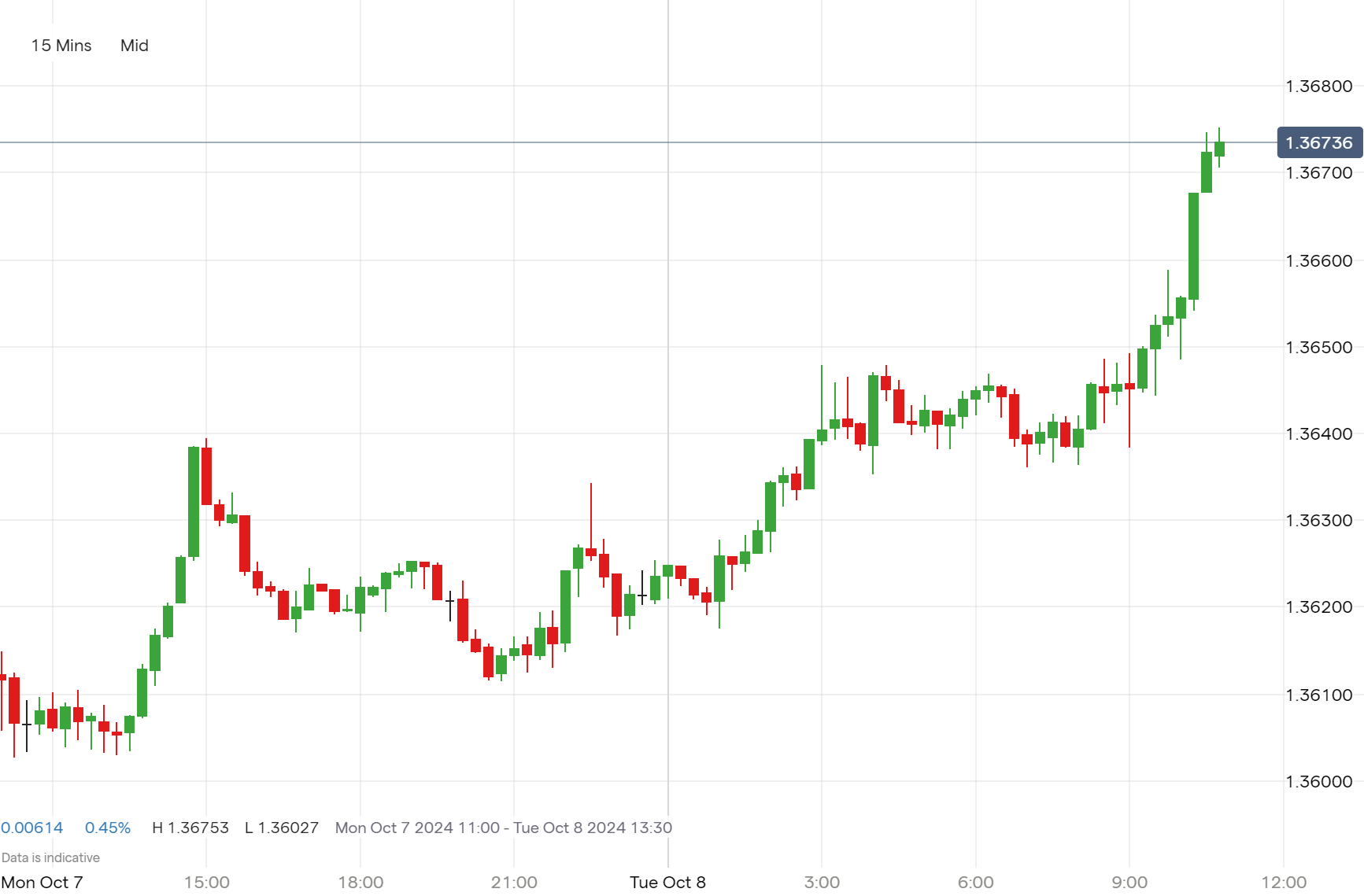Canadian dollar weakens as US dollar remains on bullish trend
September's job gains boost USD and stocks; explore how forex markets respond and what it means for traders. Stay informed on potential shifts in monetary policy impacting your trading strategy.

Key Points
- USD/CAD reached 1.36735 as the greenback strengthened
- US dollar index surged to a six-week high of 102.6
- Canada's trade deficit widened to CAD 1.10 billion in August 2024
- S&P 500 and Nasdaq both gained 0.5%
- Traders focus on FOMC minutes, CPI report, and earnings results
USD/CAD Reaches Above 1.36000
The USD/CAD currency pair has experienced significant movement, with the greenback strengthening against the Canadian dollar to reach 1.36735. Earlier, the pair traded as low as 1.3420 in September before the US dollar's resurgence, with the pair briefly exceeding 1.3900 in early August.
USD/CAD price history

US Dollar and Stock Market Index Strong as Rate Cuts Are Recalibrated
The US dollar index has climbed to a six-week high of 102.6, driven by its safe-haven status amid Middle Eastern geopolitical tensions and positive US economic data. This rise in the dollar has been accompanied by gains in US stocks, with the S&P 500 and Nasdaq both increasing by 0.5%. These market movements occur as investors adjust their expectations for Federal Reserve rate cuts, with focus turning to upcoming FOMC minutes, the CPI report, and bank earnings.
Loonie Weakens as Canada Trade Deficit Exceeds Expectations
Canada's trade deficit widened significantly to CAD 1.10 billion in August 2024, surpassing forecasts and July's deficit of CAD 0.29 billion. This growing gap can pressure the Canadian dollar, as it indicates higher imports relative to exports. Key sectors like energy, especially crude oil, have seen export declines, contributing to the loonie's weakening. Understanding the relationship between trade deficits, export performance, and currency value can help traders anticipate potential CAD movements.
What’s Next for USD/CAD?
Current economic conditions create a complex landscape for the USD/CAD pair, with several influencing factors at play. The pair's upward trend is partly driven by the USD's safe-haven demand amid geopolitical tensions and robust US economic performance. Future movements in the USD/CAD rate will hinge on key indicators such as the FOMC minutes, CPI data, and oil prices. The Canadian dollar's path will also depend on changes in Canada's trade patterns and global oil dynamics.
How to trade USD/CAD
- Open an account to get started, or practice on a demo account
- Choose your forex trading platform
- Open, monitor, and close positions on USD/CAD
Trading forex requires an account with a forex provider like tastyfx. Many traders also watch major forex pairs like EUR/USD and USD/JPY for potential opportunities based on economic events such as inflation releases or interest rate decisions. Economic events can produce more volatility for forex pairs, which can mean greater potential profits and losses as risks can increase at these times.
You can help develop your forex trading strategies using resources like tastyfx’s YouTube channel. Our curated playlists can help you stay up to date on current markets and understand key terms. Once your strategy is developed, you can follow the above steps to open an account and get started trading forex.
Your profit or loss is calculated according to your full position size. Leverage will magnify both your profits and losses. It’s important to manage your risks carefully as losses can exceed your deposit. Ensure you understand the risks and benefits associated with trading leveraged products before you start trading with them. Trade using money you’re comfortable losing.
